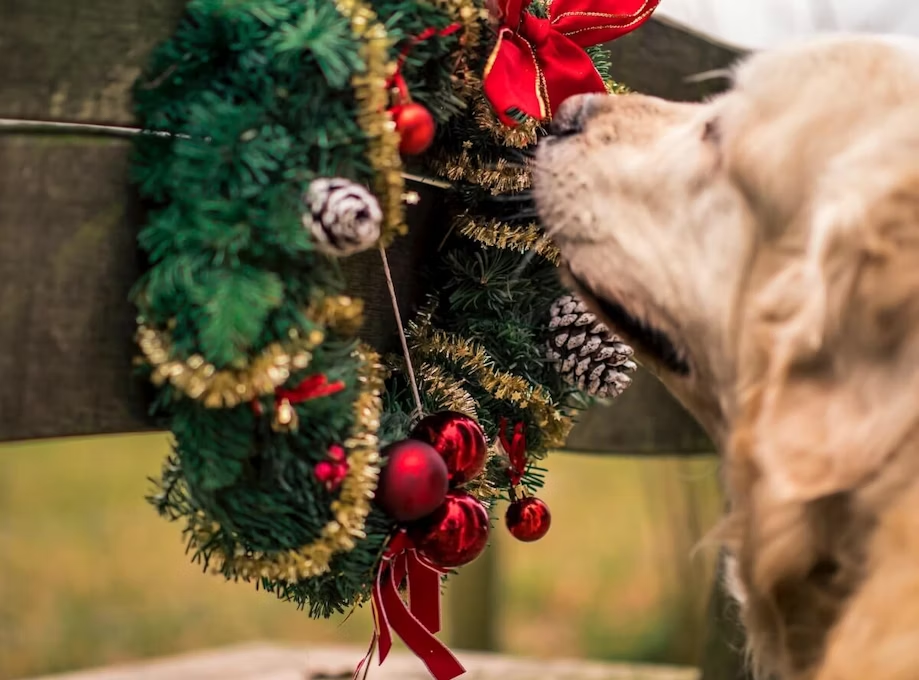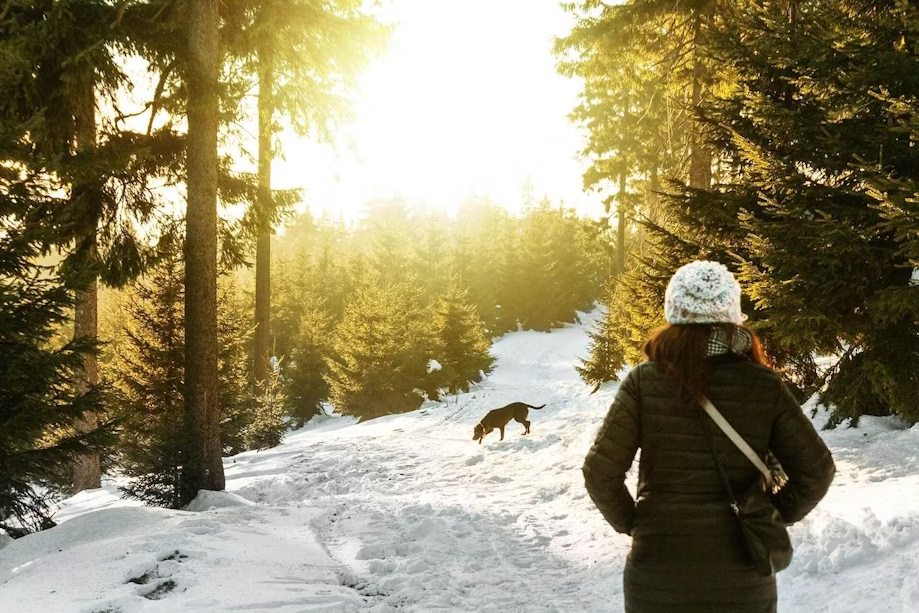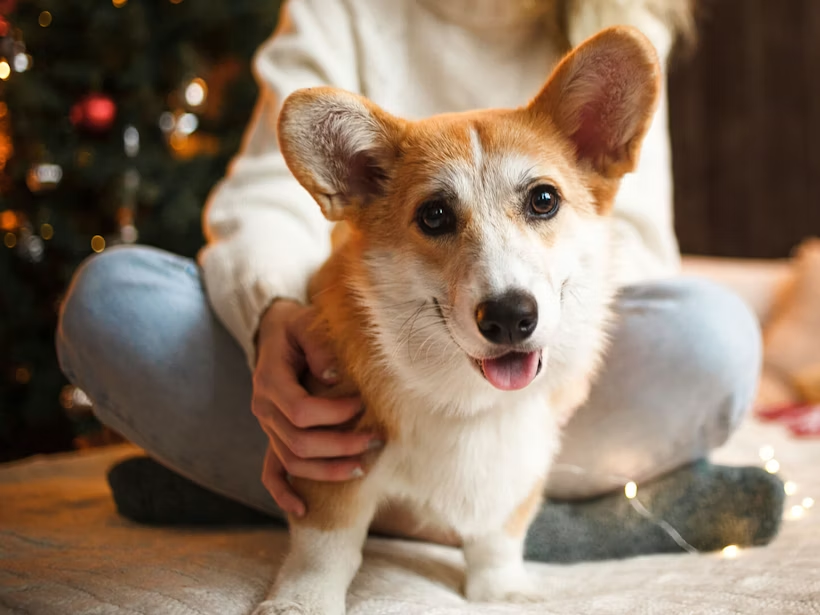Though it might be the most wonderful time of the year, the Christmas season presents a few unique risks for furry family members. But don’t worry, risks can be managed with a little planning.
As you prepare for celebrations or time with family, keep these pet safety recommendations in mind.

Take precautions with Christmas decorations.
The sights and smells of Christmas decor may contribute to the magical feeling of the season. But they also create real dangers for your pet. Here are a few common risks to watch out for.
- Tinsel is pretty, but it can be deadly (or at least require surgery) if your dog ingests it.
- Lights and other electrical decorations may tempt tenacious chewers. But they’ll give a painful shock and, if swallowed, can cause internal issues.
- Potpourri can cause digestive upset if eaten, as it often contains toxic essential oils.
- Christmas trees should be secured so that they don’t accidentally topple over. It’s also important to keep your dog away from the water pan, especially if you’ve mixed in additives. And keep in mind that some Christmas trees are sprayed with preservatives.
- Ornaments may look like toys to your dog. But if eaten, they can cut your pup’s mouth or cause serious gastrointestinal problems.
- Mistletoe and holly are toxic to dogs (as are many plants). So, if you put these festive plants out, be sure to hang them out of reach.
- Candles pose a fire risk if you’ve got an enthusiastic wagger or particularly curious pup.
- Essential oils—including citrus, cinnamon, and peppermint oils—can cause respiratory issues, or at the very least, overwhelm your dog’s sensitive nose (something to consider if you like to use a diffuser).
- Gift wrap and packaging may be fun to shred. But if ingested, these materials may cause digestive blockages.

Calm your dog with exercise.
Christmas can be a hectic time of year. There’s a lot of added hustle and bustle. And if you’re getting frequent gift deliveries, your doorbell may ring more often than normal.
Just like people, dogs react differently to changes in schedule and environment. But one of the best things you can do to help keep your dog from feeling overwhelmed during these busy days is to make sure they get plenty of exercise.
Playing a game of fetch or taking your dog for a walk around the block will help them burn off energy (and you’ll probably benefit from the fresh air, as well). Just as important as physical exercise is mental stimulation. Food puzzles and toys can keep dogs occupied and give them something to focus on other than the added activity in the home.

Create a quiet space for your pet.
Strange noises, packed households, and unfamiliar guests can make many cats and dogs nervous. Make sure your pet has a safe, calm space to retreat if the chaos of Christmas gets overwhelming. And, be sure to let your guests know if your cat or dog is shy and prefers not to be handled (or your pet may find their own less-than-friendly way of conveying that information themselves).

Keep holiday feasts out of your dog’s reach.
If your dog is normally food-motivated, they may go into overdrive during the holidays when there is an abundance of food around. (Especially if they have the POMC gene mutation, which you can test for.)
Low tables are never a safe place to leave snacks unattended. But even dining tables and counters can be fair game for a dog determined to partake in the holiday meal. Don’t underestimate your dog’s ability when turkey and gravy are involved.
These food heists not only disrupt your dinner (and cut into your leftovers) but also put your pup’s health at risk. Bones are a choking hazard. Chocolate or sugar-free sweets that contain xylitol can be toxic to your dog, as can certain common ingredients, such as garlic and onions. And fatty foods—or just too much food in general—can upset dogs’ tummies or, worse, cause pancreatitis and a trip to the vet.

Protect your pup from colder weather.
If you get snow and ice where you live, make sure your dog is prepared for the chilly weather. Some dog breeds, such as Siberian Huskies, Alaskan Malamutes, and Chow Chows, have thick coats that protect them from the elements. But other breeds are much more vulnerable to cold weather.
If your dog has a thin, short coat, short legs that keep them close to the cold ground, or minimal body fat to keep them warm, it’s a good idea to put them in a coat (or holiday sweater!) when they’re outside.
And brachycephalic breeds, such as Boston Terriers, Pugs, and French Bulldogs, may need extra attention. Their short noses and flat faces can make it difficult for them to breathe in extreme weather.
Discover your dog's temperature tolerances.
Knowing your dog’s breed background—and the climates from which their ancestors came—can help you better understand how they might handle cold temperatures. Testing your dog’s DNA can help uncover these insights and more.
Learn More